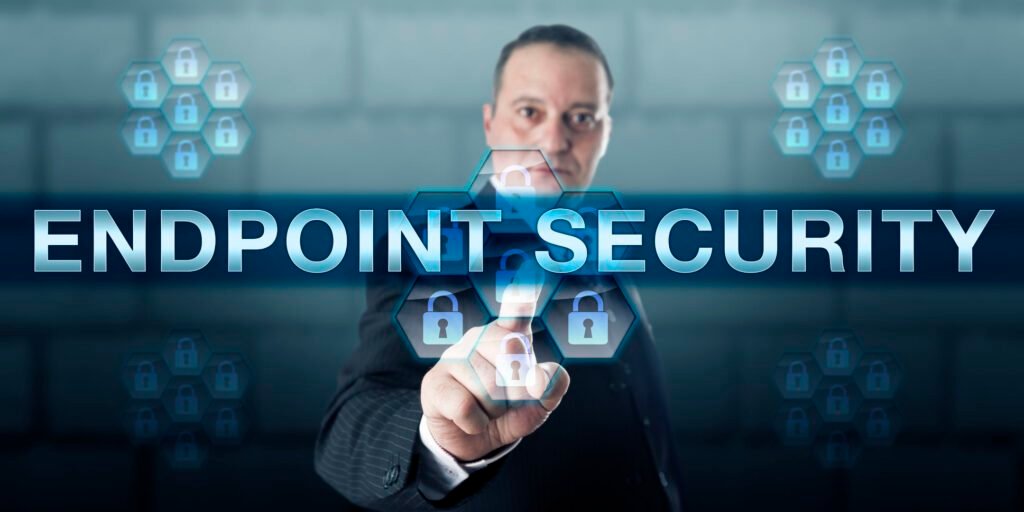Introduction
In today’s digital landscape, the security of our devices is of paramount importance. With the increasing number of cyber threats, it is crucial to implement effective endpoint security strategies to safeguard our devices and sensitive data. This blog post will provide you with valuable insights and practical tips to protect your devices from potential threats.
Understanding Endpoint Security
Endpoint security refers to the protection of devices such as laptops, desktops, smartphones, and tablets from unauthorized access, malware, and other cyber threats. It involves a combination of hardware, software, and policies designed to secure endpoints and prevent data breaches.
Key Strategies for Endpoint Security
1. Implement Strong Password Policies
One of the simplest yet most effective strategies for endpoint security is to enforce strong password policies. Encourage your employees or yourself to use complex passwords that include a combination of uppercase and lowercase letters, numbers, and special characters. Regularly update passwords and avoid using the same password for multiple accounts.
2. Keep Software and Operating Systems Up to Date
Regularly updating software and operating systems is crucial for maintaining the security of your devices. Software updates often include important security patches that fix vulnerabilities and protect against emerging threats. Enable automatic updates whenever possible to ensure that you are always running the latest versions of your software.
3. Utilize Antivirus and Anti-Malware Software
Installing reputable antivirus and anti-malware software is essential for protecting your devices from malicious software. These programs can detect and remove viruses, spyware, and other malware that could compromise your device’s security. Keep the software up to date and schedule regular scans to identify and eliminate any potential threats.
4. Enable Firewall Protection
Firewalls act as a barrier between your device and the internet, monitoring incoming and outgoing network traffic. Enable the built-in firewall on your device or consider using a third-party firewall solution to provide an additional layer of protection. Firewalls can help prevent unauthorized access to your device and block malicious connections.
5. Encrypt Your Data
Data encryption is an effective way to protect your sensitive information. Encrypting your data ensures that even if it falls into the wrong hands, it remains unreadable. Enable full-disk encryption on your devices and consider using encryption tools for individual files and folders containing confidential information.
6. Implement Two-Factor Authentication
Two-factor authentication (2FA) adds an extra layer of security to your devices and online accounts. With 2FA, you need to provide two forms of identification, such as a password and a unique code sent to your mobile device, to gain access. Enable 2FA whenever possible to protect your devices and accounts from unauthorized access.
7. Educate and Train Employees
Human error is one of the leading causes of security breaches. Educating and training your employees on best practices for endpoint security is crucial. Teach them about the importance of strong passwords, how to identify phishing attempts, and the risks of downloading files or clicking on suspicious links. Regularly update employees on the latest security threats and provide ongoing training to ensure they stay informed and vigilant.
Conclusion
Protecting your devices from cyber threats is a critical task in today’s digital age. By implementing these endpoint security strategies, you can significantly reduce the risk of data breaches and unauthorized access. Remember, endpoint security is an ongoing process, and it is essential to stay updated on the latest threats and best practices to ensure the safety of your devices and sensitive information.
Frequently Asked Questions (FAQs)
- Q: What is endpoint security?
A: Endpoint security refers to the protection of devices such as laptops, desktops, smartphones, and tablets from unauthorized access, malware, and other cyber threats. It involves a combination of hardware, software, and policies designed to secure endpoints and prevent data breaches.
- Q: Why is strong password management important for endpoint security?
A: Strong password management is important for endpoint security because passwords are often the first line of defense against unauthorized access. Encouraging the use of complex passwords and regularly updating them can help prevent unauthorized users from gaining access to devices and sensitive data.
- Q: What role do software updates play in endpoint security?
A: Software updates are crucial for maintaining the security of devices. Updates often include important security patches that fix vulnerabilities and protect against emerging threats. By regularly updating software and operating systems, users can ensure that their devices are equipped with the latest security features.
- Q: How does antivirus software contribute to endpoint security?
A: Antivirus software plays a critical role in endpoint security by detecting and removing viruses, spyware, and other malware that could compromise a device’s security. By installing reputable antivirus software and keeping it up to date, users can protect their devices from malicious software.
- Q: What is two-factor authentication (2FA) and why is it important for endpoint security?
A: Two-factor authentication (2FA) adds an extra layer of security to devices and online accounts by requiring users to provide two forms of identification to gain access. This typically involves entering a password and a unique code sent to a mobile device. 2FA helps protect against unauthorized access even if a password is compromised.
- Q: How can organizations promote better endpoint security practices among employees?
A: Organizations can promote better endpoint security practices among employees by providing education and training on best practices. This includes teaching employees about the importance of strong passwords, how to identify phishing attempts, and the risks of downloading files or clicking on suspicious links. Regularly updating employees on the latest security threats and providing ongoing training can help ensure they stay informed and vigilant.

